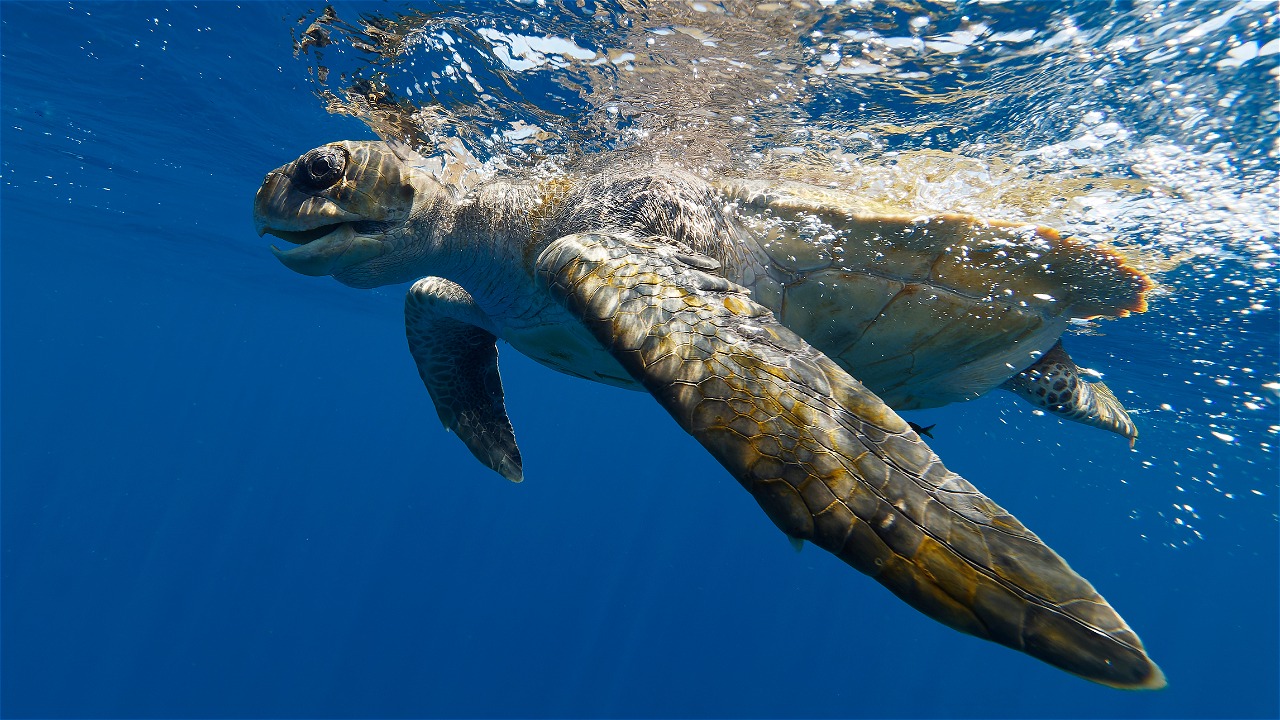JAMURSBA MEDI BEACH, NESTING AND MATING SITE FOR OLIVE RIDLEY TURTLES
By: Hadi Fernandus
The Olive Ridley turtle is one of six turtle species found in Indonesia and the second most populous after the leatherback turtle which nests on Jamursba Medi and Warmon beaches. This turtle faces many threats on the north coast of the Bird's Head of Papua Island. Both eggs and meat are targeted by land predators.
Olive Ridley Sea Turtle nests are easily excavated and are also shallow so the threat level is very high from natural predators and from irresponsible human hands. At sea and on land, sea turtles are very vulnerable to exploitation. Other human activities that can threaten the extinction of the Olive Ridley turtle are bycatch, exploitation that harms the environment and illegal trade in turtle-based products, such as rings or bracelets made from turtle carapace.
Jamursba Medi and Warmon Beach, located in Tambrauw Regency in West Papua Province, has 18 km of coastline. The beach, which can be reached for four to six hours drive from Sorong City, gave many stories to the WWF-Indonesia team during the WWF Tambrauw Program's field trip. In order to socialize the Zoning of Marine Protected Areas in April, the WWF-Indonesia team accidentally found Olive Ridley turtles (Lepidochelys olivacea) mating in the waters of Jamursba Medi beach.
Apparently, it is not only the Olive Ridley Turtle that makes the waters of Jamursba Medi beach a place to mate after doing the migration route, but it is also done by the Leatherback Turtle (Dermochelys coriacea), Green Turtle (Chelonia mydas), and Hawksbill Turtle (Eretmochelys imbricata).
The Olive Ridley Sea Turtle population in the waters of Jamursba Medi and Warmon Beach is declining. WWF monitoring data from 2007 to 2011 showed that the number of female Olive Ridley Turtles laying eggs in the Jamursba Medi and Warmon Beach area ranged from 182.73 - 350.91 turtles per year. Olive Ridley turtles lay eggs 2-3 times each season. The Olive Ridley Turtle nesting season peaks in April-May at Jamursba Medi beach, while the incubation period of Olive Ridley Turtle eggs takes 52-60 days.
The existence of sea turtles in Indonesia's aquatic ecosystems is very important, both in terms of ecology and economy. We can save the Olive Ridley Sea Turtle population by not littering and living an environmentally friendly lifestyle. If both are done together, it can certainly reduce the impact of the endangered sea turtle population. Therefore, WWF-Indonesia has organized training and patrols involving local communities since 1993 as an effort to conserve sea turtles in Jamursba Medi. Which then makes Jamursba Medi an area of turtle conservation efforts and an important work site of WWF-Indonesia to protect the nesting and mating sites of Olive Ridley Sea Turtles.
If you're playing on the beach and come across a turtle laying eggs, follow our Egg Laying Observation guide here.





